New Engineering Campus
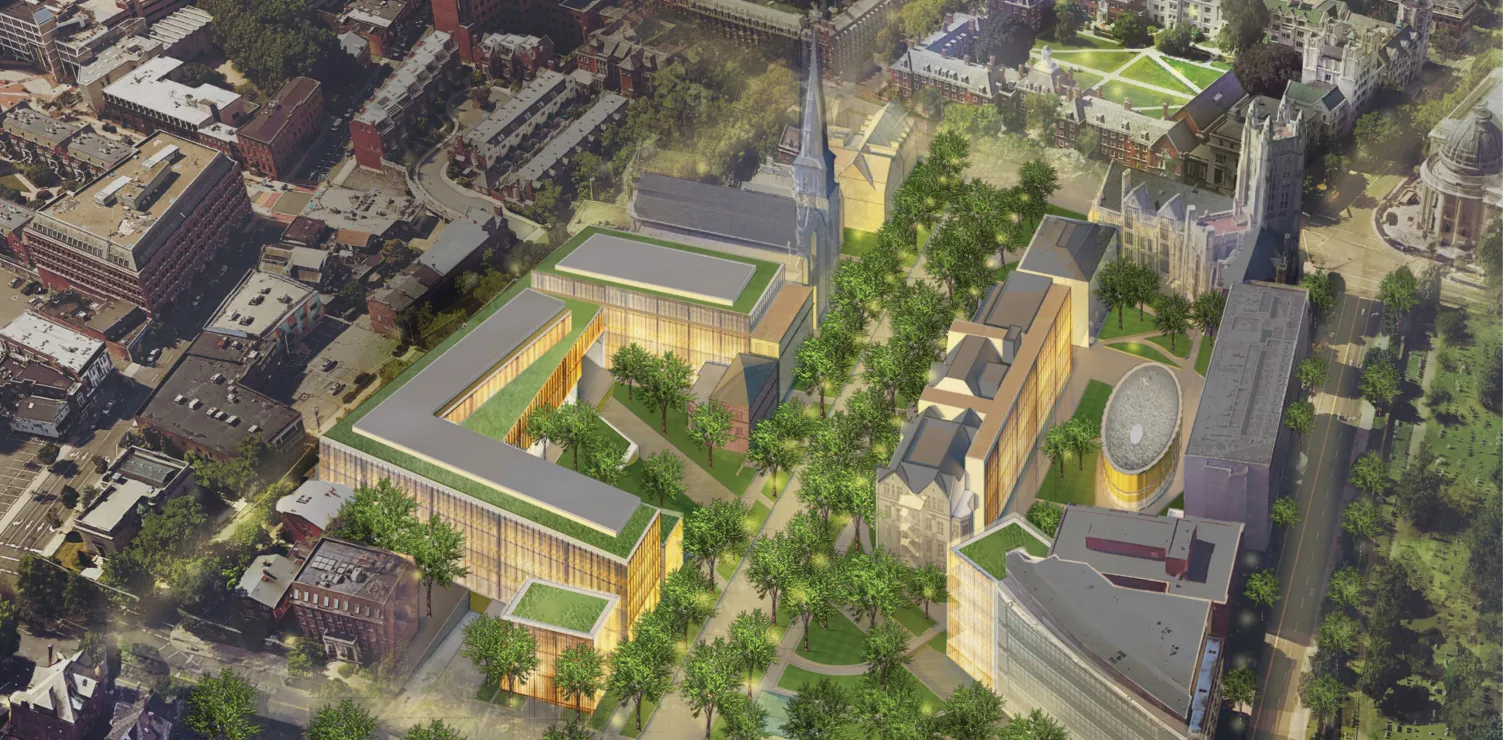
Transforming Yale Engineering
Over the next 10 to 15 years, Yale Engineering will oversee a historic transformation of its campus. With a series of major construction projects in the lower Hillhouse Avenue area, work on the new Engineering campus — one of the biggest investments in Yale history — will advance the university’s strategy for hastening engineering, science, and technology breakthroughs.
Serving as a link between Yale’s central campus and Science Hill, the combination of new and renovated spaces will reinforce the School’s culture of innovation and collaboration. Here, researchers will have the resources to address the grand challenges of the 21st century, from access to clean drinking water to reliable artificial intelligence. The new campus will position Engineering for the future while staying true to its long history. Modern, glass-encased buildings will stand alongside the majestic architecture of centuries-old structures. Facades of revered buildings will remain intact, while their interiors will be brought up to date to meet the research and education needs of today and tomorrow.
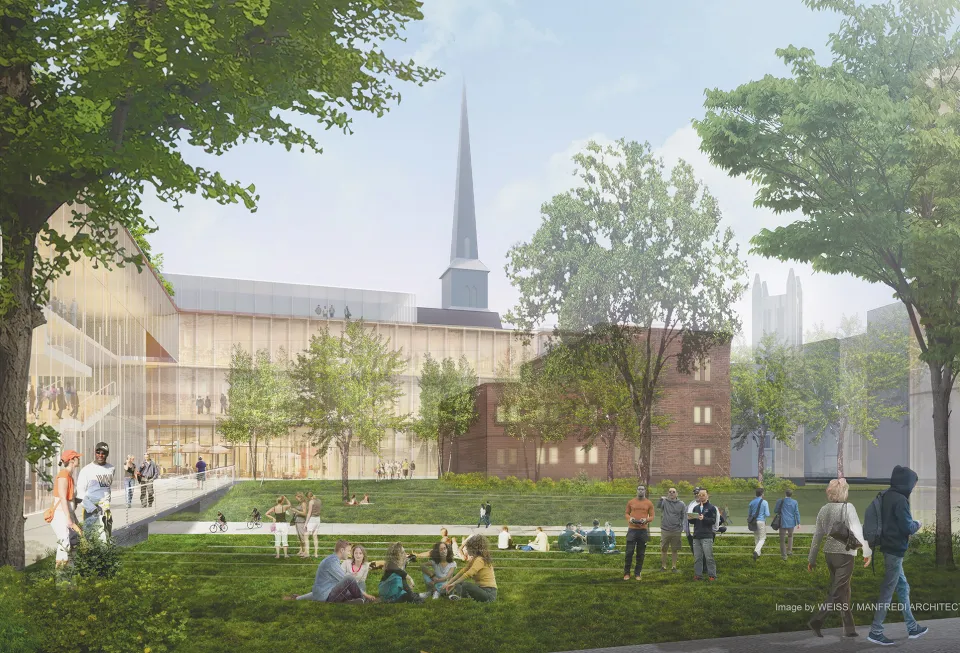
Yale Engineering Dean Jeffrey Brock said the revitalized engineering campus — concentrated on Hillhouse between Grove and Trumbull streets — in the heart of Yale, will feature inclusive spaces that welcome the entire university community. This puts Yale Engineering in place to fully realize its aim to be the school of engineering and applied science “most integrally engaged with its larger university mission.” The centrally located school will be well-positioned to create partnerships throughout the university. Providing Engineering with a strong visible identity and a hub of activity for the entire Yale community, the extensive work signals a new era for the School.
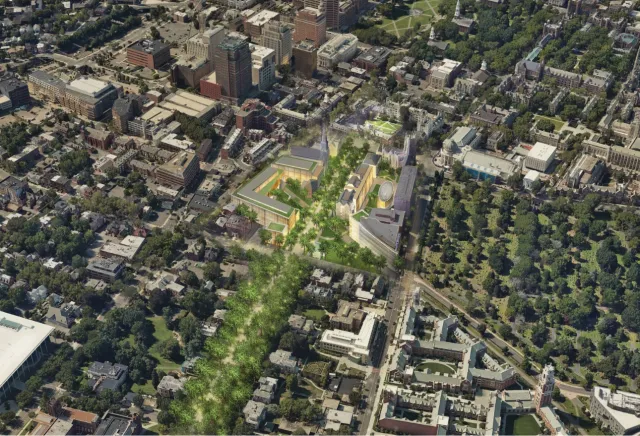
“It will provide a sense of place and identity for a thriving and growing enterprise, a re-envisioned school advancing Yale’s reputation and its own standing alongside Yale’s other great professional schools.
Jeffrey F. Brock
Dean / School of Engineering & Applied Science and William S. Massey professor of mathematics
The reimagined campus will boast new makerspaces, homes for centers and institutes, facilities supporting innovation and entrepreneurship, and room for future priorities. The plans prioritize interaction among faculty, staff, and students. As part of this goal, there will be a new outdoors quadrangle on the east side of Hillhouse envisioned as central to daily life.
The School’s transformation goes beyond infrastructure. Along with modernizing its space, Engineering is currently growing its faculty by 30 new positions, an investment that will allow the School to accelerate breakthrough research and enhance collaborative innovation. By making the needed investments now, Brock said this project will show what’s possible in the areas of education, research, community building, and sustainability.
A Centerpiece of the New Engineering Campus
The centerpiece of the campus transformation is the construction of a new building at 17 Hillhouse. The four-story building will provide approximately 43,000 square feet and feature an open floor plan and flexible lab spaces to accommodate future research needs.
“This momentous opportunity to re-envision and revitalize our dated infrastructure will help Yale Engineering attract additional premier faculty while supporting existing faculty and students through state-of-the-art spaces and facilities,” Brock said. “A robust slate of major improvements will allow Yale Engineering to continue growing and will enrich both Yale and our surrounding community, furthering our pursuit of real-world impact and intensifying the spirit of innovation in the heart of Yale’s campus.”
The innovations enabled by an enhanced engineering campus will help the university as a whole achieve its aims, and ultimately yield benefits throughout society.
“At Yale, we are accelerating the pace of research and innovation in engineering and science,” said President Peter Salovey. “The work of Yale Engineering over the coming decades will transform technological development across every sector. These investments will provide a platform on which to build next-generation solutions to the most pressing global challenges.”
A Reimagined Becton Plaza
Renovation to the Becton Plaza will complement Yale’s “innovation corridor” — which includes the Center for Engineering Innovation & Design, the Greenberg Engineering Teaching Concourse, and the Tsai Center for Innovative Thinking at Yale.
Community-based thinking will inform the design of labs, makerspaces, and classrooms. Collaborative spaces for faculty and communal gathering areas will sit alongside cutting-edge laboratory and instructional facilities, helping nurture new ideas and fruitful partnerships. In line with the School’s Strategic Vision, all new spaces will be organized by research and teaching priorities rather than by academic department. Keeping the School’s ambitions in mind, there will be hubs dedicated to specific areas of emphasis, such as AI, computational and mathematical modeling, and robotics. Additionally, plans will provide space for existing strengths and for initiatives still to be imagined.
Immediate efforts focus on alleviating current space constraints within engineering buildings by bringing new state-of-the-art labs online as quickly and thoughtfully as possible. Doing so will allow room for maintaining Engineering’s steady growth while minimizing relocations for existing faculty.
The project also serves Yale’s sustainability goals, as buildings will be comprehensively renovated or demolished, and new structures built to Yale’s zero-carbon-ready standard. A geothermal network will provide efficient, clean, and resilient thermal energy.
The first major work will be at 19 Hillhouse. This new building will be dedicated to the School initiative Robotics for Humanity and designed to foster a spirit of collaboration among robotics researchers. Like many other new spaces, this one will be defined by areas of research: Roboticists from Computer Science, Mechanical Engineering, and Electrical & Computer Engineering will all work together within the facility. The building will feature modern laboratories, state-of-the-art equipment, and floor plans that can be reconfigured to meet the changing needs of scientific inquiry. As the first phase to be completed in the campus transformation, 19 Hillhouse will be emblematic of Yale Engineering, and represent the kinds of changes to expect in the next decade.
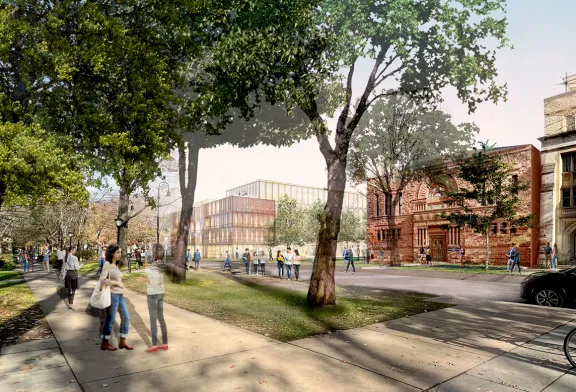
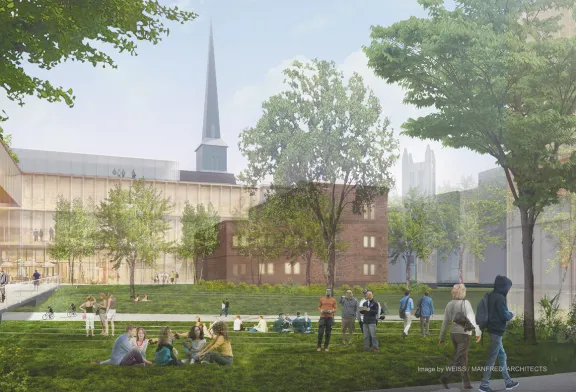
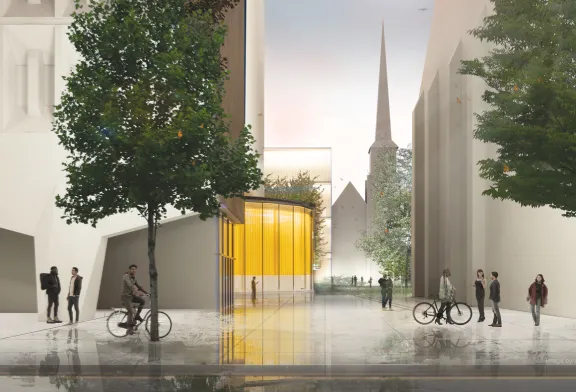
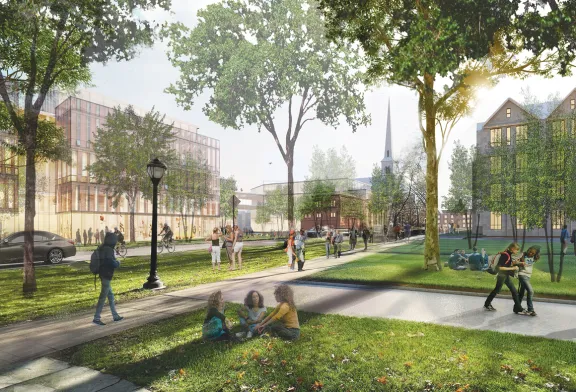
The revitalization of lower Hillhouse will complement work already underway on the Physical Sciences and Engineering Building (PSEB), which will be located on the north end of Science Hill, where many of Engineering’s close collaborators work. That building — also one of the largest facilities projects in university history — will house numerous engineering and science initiatives, including quantum computing, quantum engineering, and materials science.
Provost Scott Strobel said that, together with the PSEB, the plans for lower Hillhouse signal Yale’s resounding commitment to engineering. Alongside other recent investments across campus, he said “this reimagining of Yale Engineering facilities and its ambitions will benefit generations of scholars to come.”
“It will afford the School the kind of flexible, well-equipped spaces it needs to conduct world-class teaching and research, and to develop elegant, sustainable solutions to global challenges.”